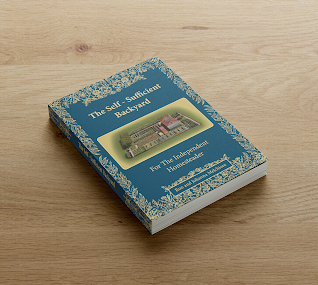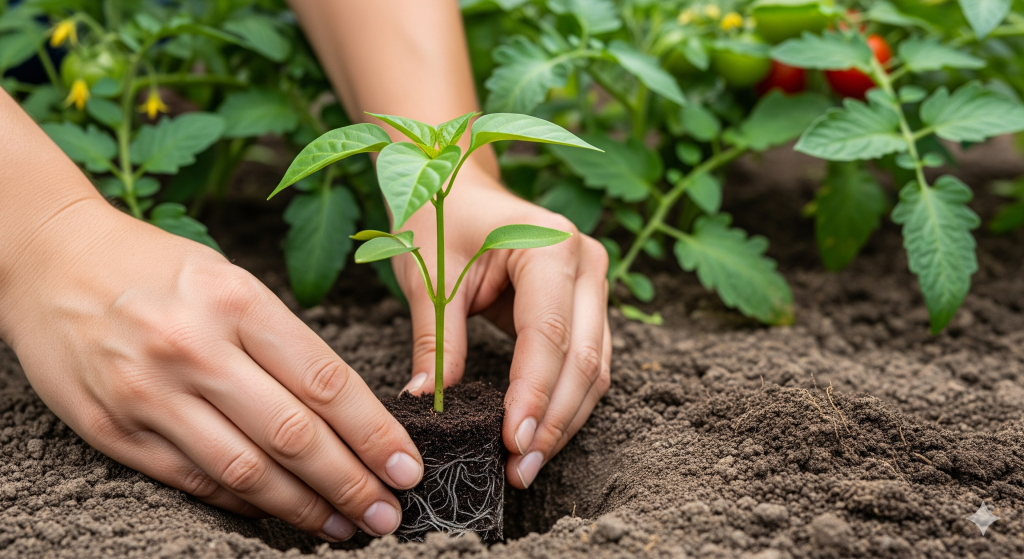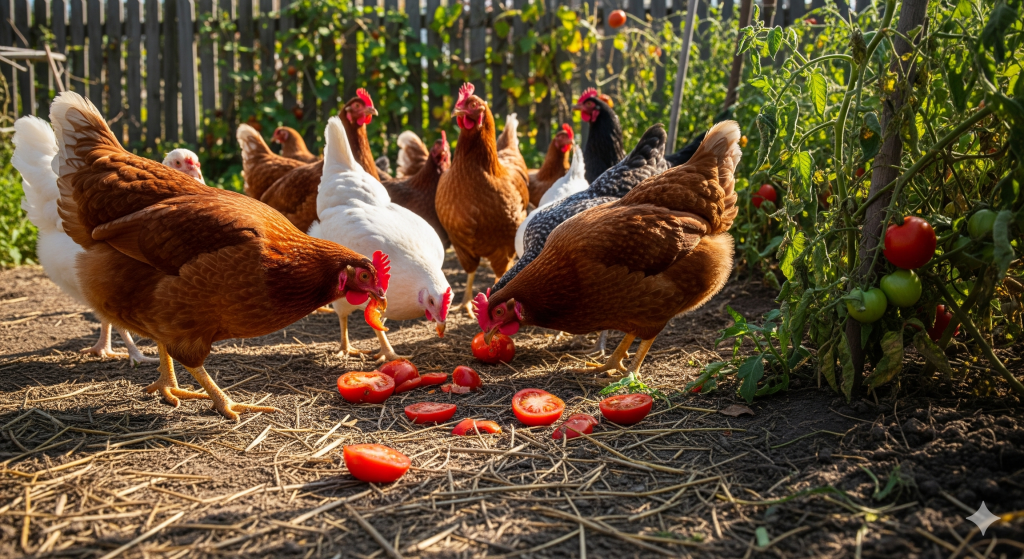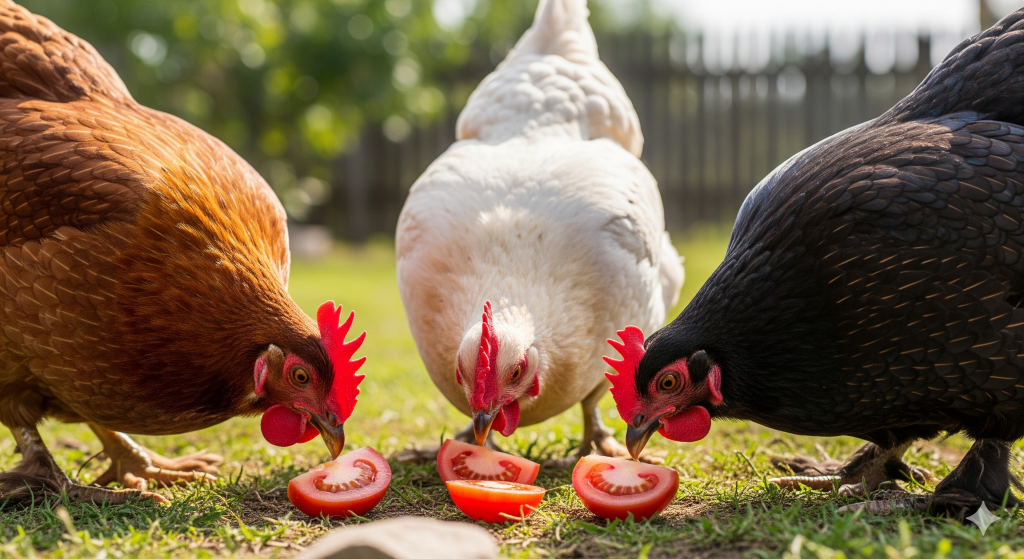Table of Contents
For experienced gardeners, the advice to plant tomato seedlings deep, burying a portion of the stem, is almost second nature. This technique encourages the buried stem to produce new roots, leading to a stronger, more resilient plant. Given that tomatoes and peppers are both members of the nightshade family and share many growing preferences, a common question arises: “Can you plant pepper plants deep like tomatoes?” The answer, while nuanced, is generally no, you should not plant peppers as deep as you would tomatoes.
While both plants benefit from a strong root system, their physiological responses to deep planting differ significantly. Understanding these differences is crucial for ensuring your pepper plants thrive, produce abundantly, and avoid potential problems that can arise from improper planting depth. This guide will delve into the specifics of planting peppers, clarifying the optimal depth, explaining why they differ from tomatoes, and offering best practices for a healthy pepper harvest.
Can You Plant Bell Peppers Deep Like Tomatoes?
The short answer is no, you should not plant bell peppers deep like tomatoes. This applies to virtually all pepper varieties, including bell peppers, hot peppers, and sweet peppers. While the idea of stimulating more root growth by burying a portion of the stem is effective for tomatoes, it is generally detrimental to peppers.
Tomato stems have specialized cells that readily convert into root tissue when buried. This ability allows them to recover from leggy growth and build an incredibly robust root system. Pepper stems, however, lack this specific adaptation. When a pepper stem is buried too deeply, especially in heavy or poorly draining soil, it becomes vulnerable to several issues:
- Stem Rot: The buried stem is more likely to stay wet, creating ideal conditions for fungal pathogens that cause stem rot. This can quickly girdle the plant and lead to its demise.
- Lack of Oxygen: Buried stems may not receive adequate oxygen, which can stress the plant and hinder its growth.
- Stunted Growth: Instead of diverting energy to produce new roots from the buried stem, the pepper plant may simply struggle to adapt, leading to stunted growth and reduced fruit production.
Therefore, the best practice for planting pepper seedlings is to keep them at the same depth they were in their nursery pot or seed-starting tray.
Can I Plant Pepper Seedlings Deep?
As mentioned, it’s generally not advisable to plant pepper seedlings deep. You should aim to plant pepper seedlings so that the soil line is roughly at the same level as it was in the pot you purchased or grew them in.
There is one exception to this rule: if your pepper seedling has become leggy (tall and stretched with a thin stem) due to insufficient light, you can bury it slightly deeper, perhaps an inch or two below the original soil line. However, this should only be done if absolutely necessary, and always ensure the buried portion of the stem is healthy and firm, not soft or discolored. Even then, you should aim for good drainage to prevent rot. For the vast majority of healthy pepper seedlings, sticking to the original soil line is the safest bet.
How Deep Do Pepper Plants Need?
Pepper plants, once established, develop a strong, fibrous root system that can extend surprisingly deep into the soil, often 18-24 inches (45-60 cm) or more. However, this is their natural root development, not a result of deep planting at the seedling stage.
When transplanting a pepper seedling, the ideal depth is such that the soil level in the garden bed is the same as the soil level in the seedling’s container. If you have to disturb the roots slightly during transplanting, that’s fine, but do not intentionally bury a significant portion of the stem like you would with a tomato. The goal is to provide a stable base for the plant without encouraging stem rot.
Ready to Take Your Self-Sufficiency to the Next Level?

If you love the self-sufficient lifestyle, this is the only guide you’ll ever need. Learn how to generate your own power, secure your water supply, and become truly independent. No fluff, just actionable plans.
➡️ Check out The Self-Sufficient Backyard and start your journey today!
Is It Ok to Plant Peppers Next to Tomatoes?
Yes, it is generally perfectly fine and often beneficial to plant peppers next to tomatoes. In fact, they are considered good companion plants by many gardeners. Both belong to the nightshade family (Solanaceae) and share similar cultural requirements:
- Sunlight: Both need full sun (6-8 hours daily) to thrive.
- Water: Both prefer consistently moist, well-drained soil.
- Nutrients: Both are heavy feeders and appreciate rich, well-composted soil.
- Pest Control: While not a guaranteed solution, some gardeners believe the strong scent of tomato foliage can deter pests from peppers, and vice versa.
- Staking/Caging: Both plants often benefit from staking or caging, which helps keep them upright and prevents fruit from touching the ground.
The main consideration when planting them together is ensuring adequate spacing to prevent overcrowding, which can lead to reduced air circulation and increased risk of fungal diseases. Generally, aim for 2-3 feet (60-90 cm) between individual plants, depending on the mature size of the specific varieties.
Do Pepper Plants Need a Lot of Space?
Yes, pepper plants do need a good amount of space to thrive and produce abundantly. While they might not sprawl as widely as some vining plants, they grow into bushy plants that require room for good air circulation and sunlight penetration.
- Air Circulation: Adequate spacing is crucial for air circulation around the foliage. This helps to dry leaves quickly after watering or rain, significantly reducing the risk of fungal diseases like powdery mildew and bacterial spot.
- Sunlight Penetration: When plants are too close, their leaves shade each other out. Good spacing ensures that sunlight reaches all parts of the plant, promoting robust growth and encouraging more flowers and fruit set.
- Root Development: Sufficient space allows the root system to spread out and efficiently access water and nutrients from the soil without undue competition.
- Harvesting: Proper spacing also makes it much easier to access and harvest your peppers without damaging the plants.
For most standard pepper varieties, aim to space them 18-24 inches (45-60 cm) apart in rows, with rows spaced 2-3 feet (60-90 cm) apart. For larger, sprawling varieties, you might need to increase this spacing. Giving your pepper plants the room they need will result in healthier, stronger plants and a more abundant harvest.
Conclusion
While tomatoes famously benefit from deep planting, extending their root system along buried stems, this technique is a misstep for pepper plants. Pepper stems do not possess the same ability to form adventitious roots and are far more susceptible to rot and stunted growth when buried below their original soil line. The optimal planting depth for a pepper seedling is precisely at the same level it was in its nursery container.
Despite this key difference in planting depth, peppers and tomatoes are otherwise compatible garden companions, sharing similar needs for sunlight, water, and rich soil. When planted with adequate spacing to ensure good air circulation and allow for full growth, both can thrive side-by-side. Providing sufficient space for your pepper plants is paramount, enabling robust root development, preventing disease, and promoting an abundant yield. By understanding and respecting these specific needs, gardeners can cultivate strong, healthy pepper plants that will generously reward their efforts with a season full of delicious fruit.



